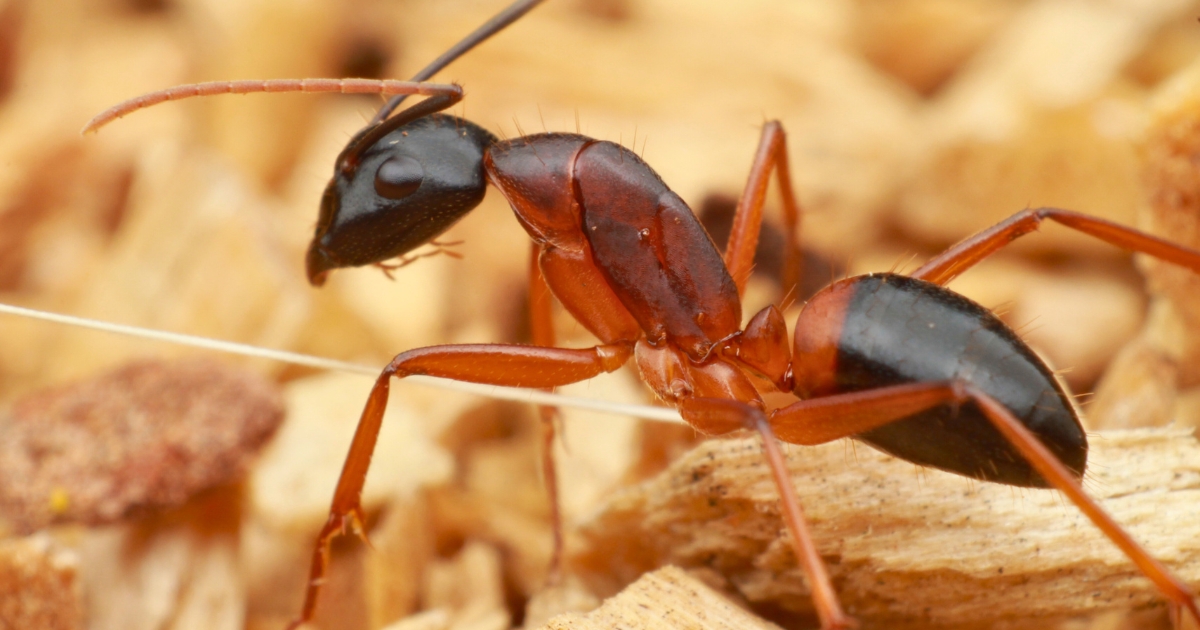A remarkable ability hidden in the world of ants has been revealed. These tiny creatures possess surgical skills we never imagined. Recent research highlights the complexity of cooperation and behavior in ant societies.
Ants’ Astonishing Surgical Skills
In July 2024, researchers from the University of Lausanne reported a shocking discovery. Florida carpenter ants (Camponotus floridanus) perform amputations to save their nestmates’ lives. This is the first known case of non-human animals amputating limbs to prevent infection.
The study showed that these amputations were not random, resulting in a survival rate of over 90%. In the experiment, three ants without amputations died, while most that underwent the procedure survived.
The Need for Ant Medical Care
Many ant species can prevent infections by applying antimicrobial substances from their salivary glands to wounds. In 2023, an African ant species (Megaponera analis) was reported to treat wounds by licking, reducing infection rates by 90% in injured nestmates.
However, carpenter ants, including Florida carpenter ants, lack these antimicrobial-secreting organs. This may have led them to evolve their unique amputation method.
Precise Surgical Techniques
The research team discovered that ants alter their treatment based on the injury location. For thigh (femur) injuries, ants amputate near the body, removing the entire leg. This is because the upper leg contains more muscle mass, increasing infection risk.
For lower leg (tibia) injuries, which have a low post-amputation survival rate, ants treat by licking. This removes debris and cleans the wound to prevent infection.
Behavior of Social Insects
Social insects like ants and bees are known for cooperating in nest building and defense. They work efficiently by mimicking their nestmates’ actions.
Florida carpenter ant colonies can have up to 4,000 ants, mostly non-fertile female workers. They can get injured while foraging or fighting other colonies. Injured ants are susceptible to bacterial or fungal infections, which could spread throughout the colony if untreated.
Researchers found that over 10% of wild Florida carpenter ants (Camponotus floridanus) show signs of injury. Saving these injured ants is crucial for the colony as they still play important roles as workers.
Ant Behavior as an Emergent Phenomenon
Ant behavior is considered a type of “emergent phenomenon,” also called “swarm intelligence.” Complex, adaptive behaviors emerge from the collective actions of individual ants following simple rules.
Even complex behaviors like nest building, foraging, and the newly discovered surgical procedures might result from combinations of simple reactions. For example, gathering in response to specific chemicals (pheromones) or biting in response to the shape of an injured body part might combine to produce behavior that appears as sophisticated surgery.
Robotics researchers at Harvard University are studying how ants dig tunnels to escape confinement, refining their algorithms. This exemplifies how simple rule-based behaviors can lead to complex problem-solving.
The high problem-solving ability of Florida carpenter ants likely reflects the colony’s adaptive capacity acquired through long evolution, rather than individual ant intelligence. Their life-saving surgeries are more likely realized through chains of stimuli and responses rather than conscious cooperation between patient and surgeon.
Healing Behaviors in Nature
Other animals are known to treat illnesses and injuries. Bears, elephants, moths, starlings, and dolphins have been observed self-medicating. Chimpanzees are particularly notable, using specific plants to treat diseases and recently reported using insects to treat their own and others’ wounds.
However, these healing behaviors differ mechanistically from ant behavior. In many mammals and birds, these are likely conscious actions based on learning and cognitive abilities, fundamentally different from ants’ emergent behavior. In the case of chimpanzees, their actions may be based on knowledge acquired through observational learning and trial and error.
Conclusion
The remarkable surgical abilities of Florida carpenter ants reveal just one aspect of nature’s hidden wonders. Their behavior is thought to result from collective adaptive capacities acquired through evolution, not merely instinct.
This discovery makes us re-acknowledge nature’s marvels and teaches us about the complexity of small creatures’ behavior and the importance of the simple rules that generate it. The advanced problem-solving abilities seen in the ant world demonstrate the power of emergent phenomena and offer many implications for human society and AI development.
Future research may uncover similar abilities in other insects and animals. Nature may still be hiding many secrets from us. The discovery of ant surgery is likely to be the first step in opening new doors in biology.


